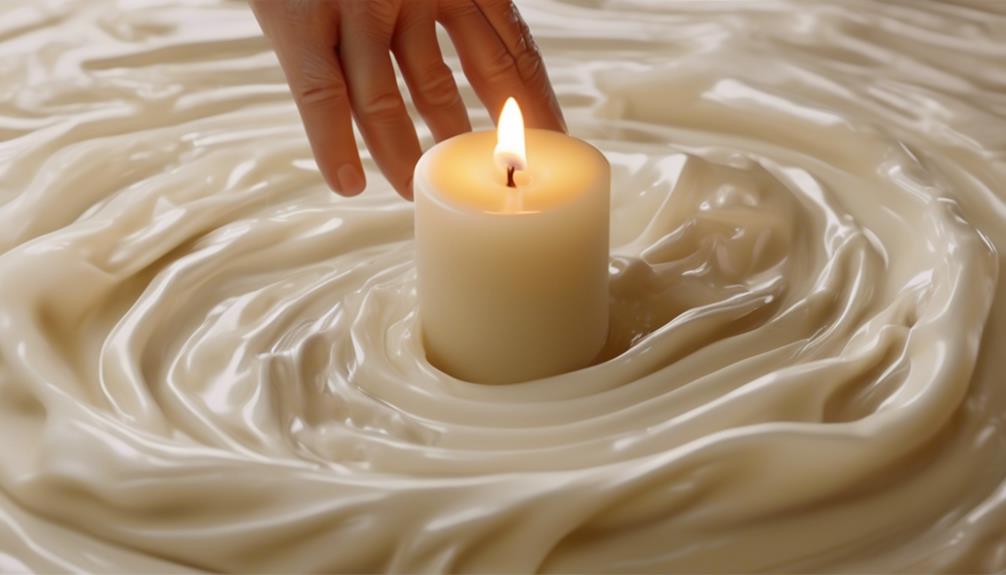Have you ever considered the composition of a candle’s wick? Allow us to illuminate this fascinating subject for you.
The wick, which is the heart of a candle, plays a crucial role in the burning process. It is responsible for drawing up the liquid wax and transforming it into a beautiful, flickering flame.
Different types of wicks exist, each made from various materials such as cotton, linen, hemp, paper, wood, and even metal-core. These materials determine the wick’s performance, burn rate, and overall quality of the candle.
So, whether you’re lighting a romantic dinner or creating a cozy ambiance, understanding the composition of a candle’s wick can enhance your candle experience.

Key Takeaways
- Cotton wicks are made from tightly twisted cotton fibers and have minimal soot and smoke.
- Linen wicks are made from natural linen fibers and burn consistently and evenly.
- Hemp wicks are made from sustainable hemp fibers and burn slowly and evenly.
- Paper wicks are an alternative to cotton wicks, burn slower for longer burning time, and have lower carbon buildup.
Cotton Wicks
The cotton wicks used in candles are made from tightly twisted cotton fibers. Cotton wicks have several advantages over other types of wicks.
First, they’re highly absorbent, allowing them to quickly draw up the melted wax and provide a steady, consistent flame. This makes cotton wicks ideal for candles that require a long burn time.
Second, cotton wicks have a minimal amount of soot and smoke, resulting in a cleaner burn and less air pollution.
Additionally, cotton wicks come in different sizes and thicknesses, allowing candle makers to choose the perfect wick for their specific candle size and wax type.
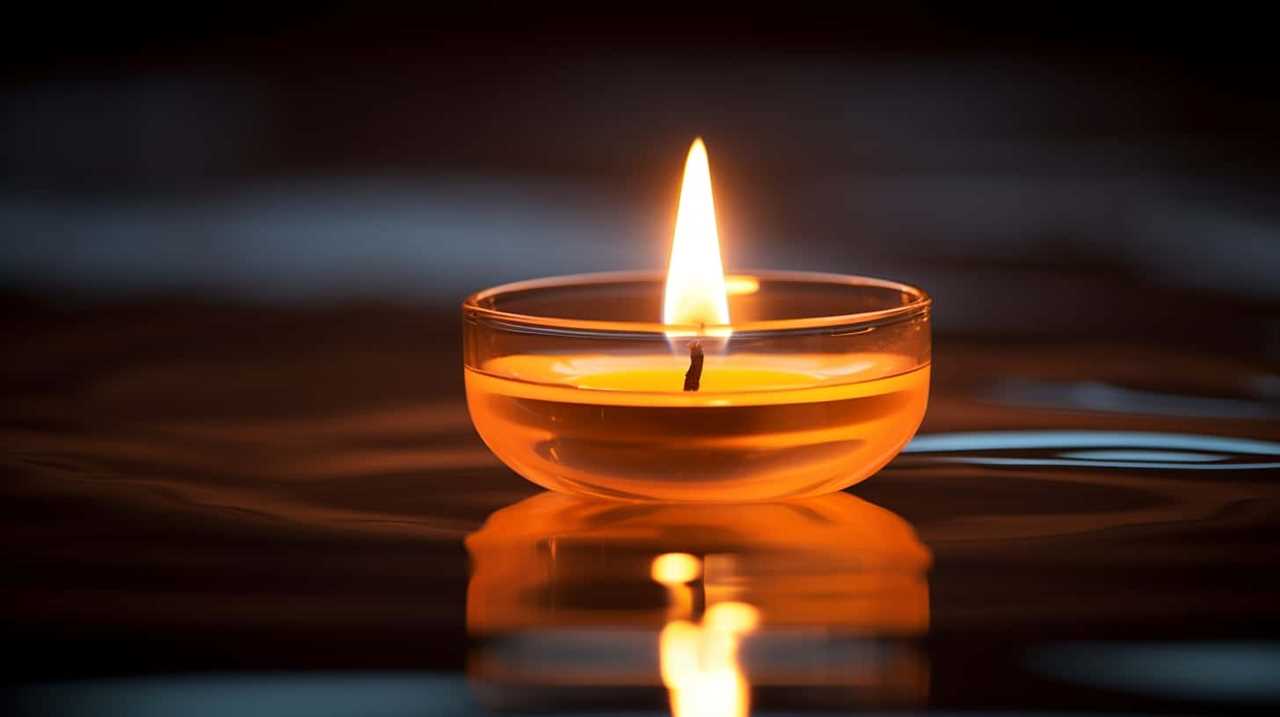
As we transition to the subsequent section about ‘linen wicks’, it’s important to note that linen wicks offer their own unique advantages in candle making.
Linen Wicks
Now let’s explore the advantages of linen wicks in candle making.
Linen wicks offer several benefits that make them a popular choice among candle makers.
One of the main advantages of linen wicks is their superior burning characteristics. Linen is a natural fiber that burns consistently and evenly, resulting in a clean and steady flame. This ensures that the candle burns efficiently and lasts longer.

Additionally, linen wicks have a lower tendency to mushroom or produce excess soot compared to other wick materials. This makes them ideal for creating candles with minimal smoke and residue.
Furthermore, linen wicks have a higher heat resistance, allowing them to withstand higher temperatures without bending or breaking.
Hemp Wicks
Hemp wicks offer several advantages over other materials commonly used in candle wicks.
Firstly, hemp is a highly sustainable crop, requiring minimal water and no pesticides or herbicides. This makes hemp wicks a more environmentally friendly option for candle makers who prioritize sustainability.
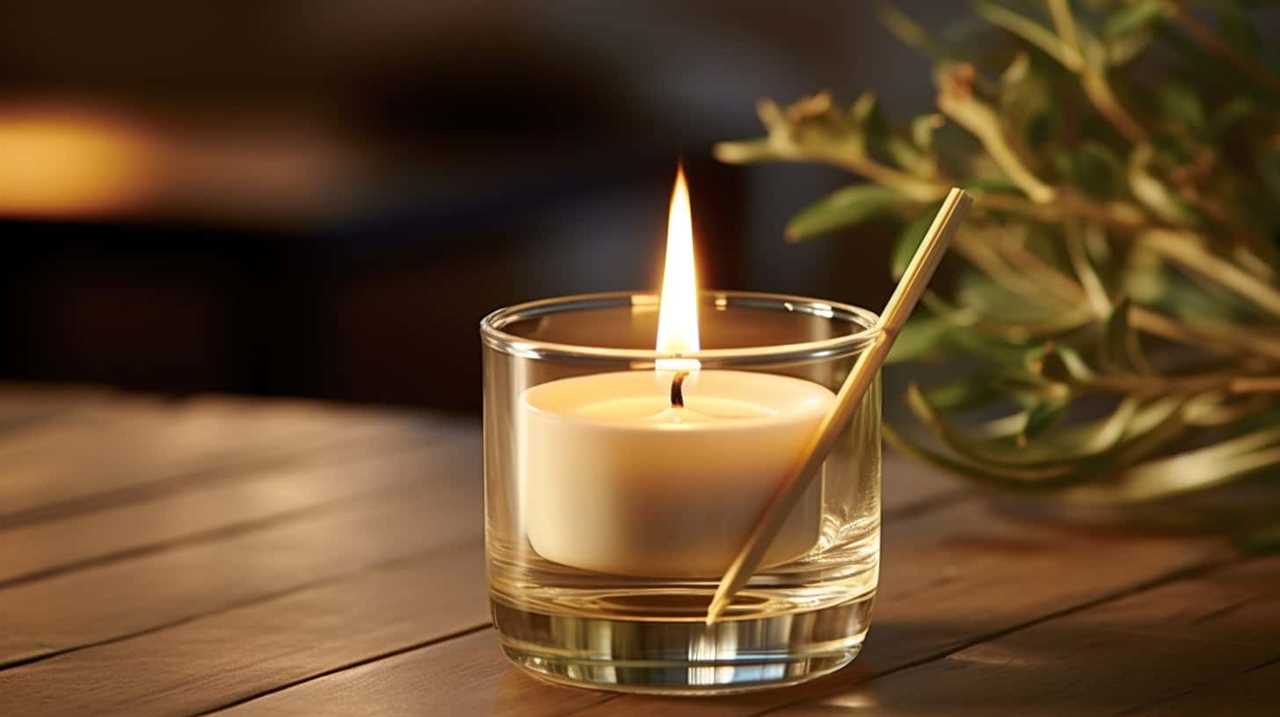
Additionally, hemp wicks have been found to burn more slowly and evenly, resulting in a longer-lasting and more consistent burn for candles.
Advantages of Hemp Wicks
We have found that using hemp wicks brings numerous benefits to candle burning.
Hemp wicks offer several advantageous features that make them an excellent choice for candle enthusiasts. Firstly, hemp wicks are known for their slow and even burn, allowing for a longer-lasting and more consistent flame. This ensures that the candle burns evenly and reduces the risk of tunneling or uneven melting.
Additionally, hemp wicks have a lower environmental impact compared to traditional cotton wicks. Hemp is a sustainable and renewable resource that requires less water and pesticides to grow, making it a more eco-friendly option.
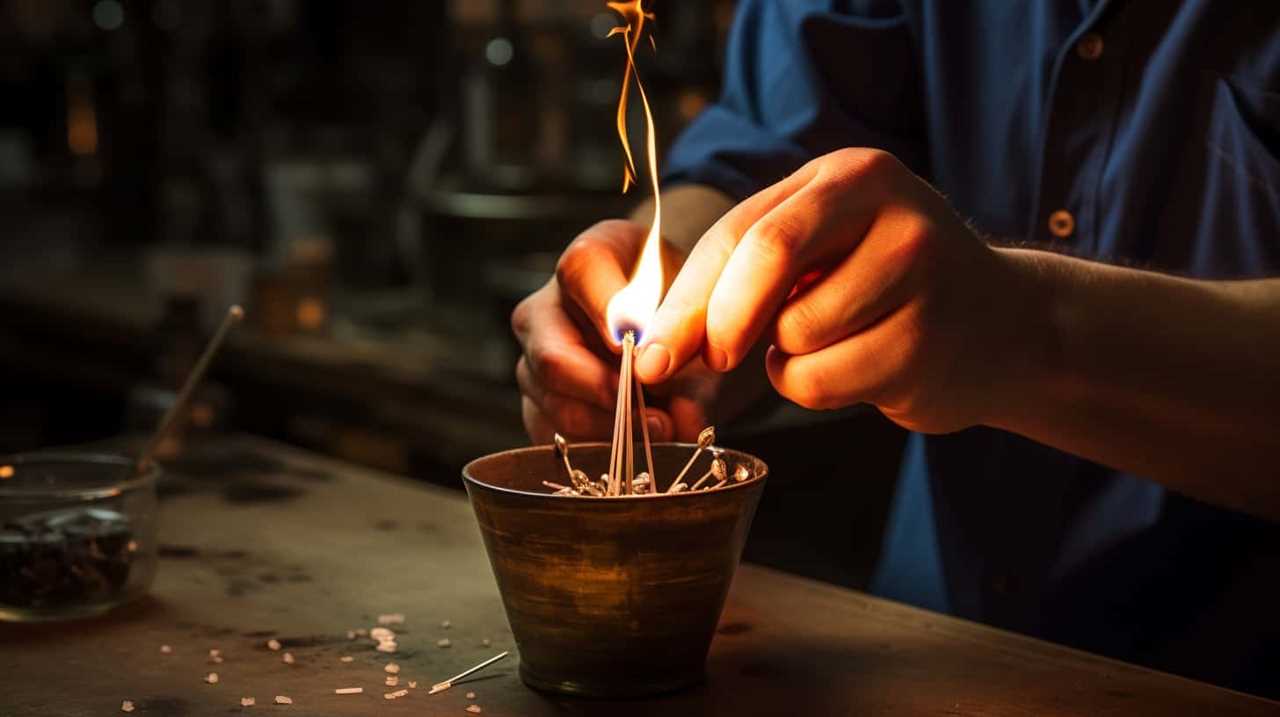
Furthermore, hemp wicks produce less soot and smoke, resulting in cleaner air and less residue on candle jars.
Sustainability of Hemp
Using hemp wicks in candle making ensures a sustainable choice for environmentally conscious individuals. Hemp, a versatile and renewable resource, offers several benefits in terms of environmental impact and economic viability.
| Environmental Impact | Economic Viability |
|---|---|
| Hemp cultivation requires minimal pesticides and fertilizers, reducing soil and water pollution. | Hemp is a fast-growing crop that yields high quantities of fiber, making it a cost-effective option for wick production. |
| Hemp is biodegradable and does not release harmful toxins when burned, minimizing air pollution. | Hemp cultivation creates job opportunities and supports local economies. |
| Hemp wicks have a lower carbon footprint compared to traditional cotton wicks, contributing to climate change mitigation. | The increasing demand for hemp products drives innovation and investment in the hemp industry. |
Paper Wicks
Paper wicks are an alternative to cotton wicks and offer unique burning characteristics. Compared to cotton wicks, paper wicks tend to burn slower, providing a longer burning time for the candle.
Additionally, paper wicks have a lower carbon buildup, resulting in less soot and a cleaner burn.
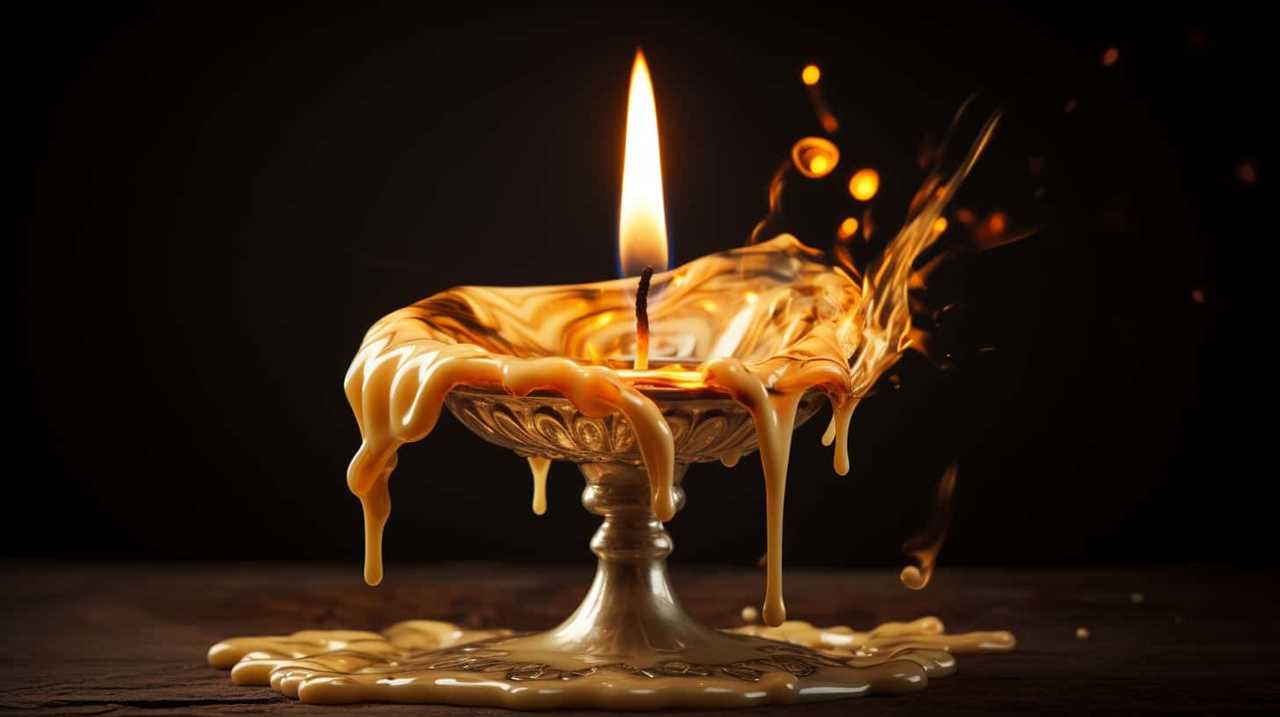
Paper Wicks Vs. Cotton
When it comes to candle wicks, there’s a notable difference between using paper wicks and cotton.
Cotton wicks have several advantages over paper wicks.
Firstly, cotton wicks have better burn stability, meaning they’re less likely to flicker or extinguish during use.
Additionally, cotton wicks produce a cleaner and more even burn, resulting in a more consistent release of fragrance and a longer-lasting candle.
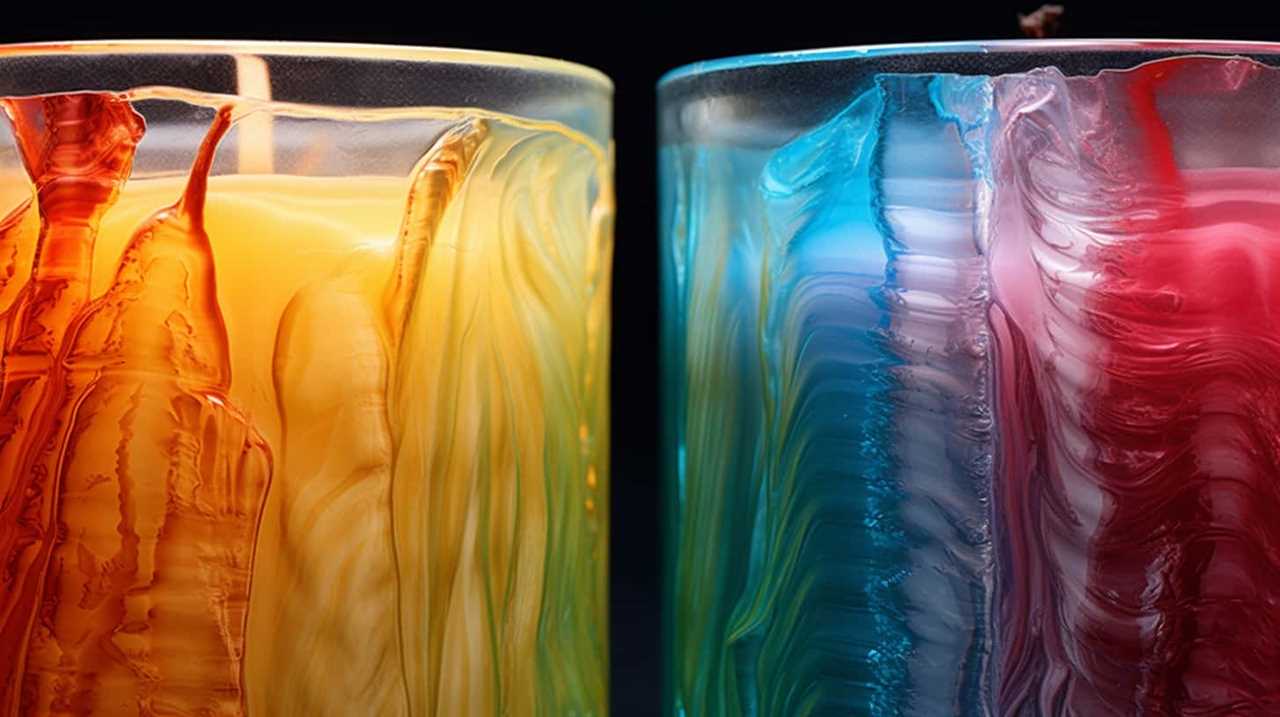
Cotton wicks also have a higher heat resistance, allowing them to withstand higher temperatures without bending or breaking.
On the other hand, paper wicks have some disadvantages.
They tend to have a weaker flame, which can result in a less efficient burning process.
Paper wicks are also more prone to crumbling and disintegrating, leading to a shorter lifespan.
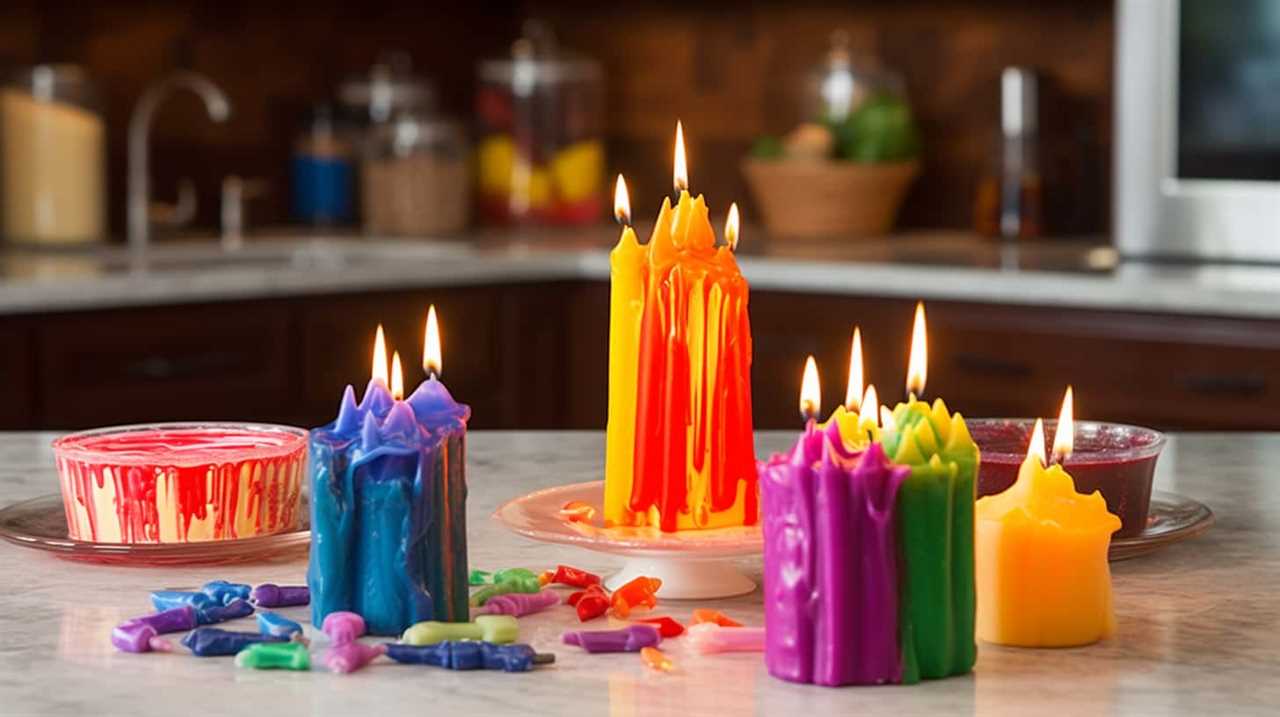
Burning Characteristics of Paper Wicks
To understand the burning characteristics of paper wicks, we need to examine their performance and behavior during candle use.
Paper wicks burn at a moderate speed, which is influenced by factors such as wick thickness, composition, and the amount of wax absorbed. The burning speed of paper wicks can be adjusted by altering these factors during the manufacturing process.
Flame stability is another important characteristic of paper wicks. It refers to the ability of the flame to maintain its shape and intensity throughout the burn. Paper wicks generally exhibit good flame stability due to their composition and structure, which allows for efficient fuel consumption.
However, it’s important to note that flame stability can also be influenced by external factors such as ambient conditions and the presence of drafts.

Wood Wicks
We love using wood wicks in our candles for their unique crackling sound and rustic aesthetic. Wood wicks offer several advantages over traditional cotton wicks. Firstly, wood wicks have a slower burn rate, resulting in a longer-lasting candle. Secondly, they produce a wider and more consistent flame, ensuring even wax melting and a more efficient burn. Lastly, the crackling sound produced by wood wicks adds an extra sensory experience, creating a cozy and comforting ambiance.
To better understand the differences between wood wicks and cotton wicks, let’s compare them in a table:
| Aspect | Wood Wicks | Cotton Wicks |
|---|---|---|
| Burn Rate | Slower | Faster |
| Flame | Wider | Narrow |
| Sound | Crackling | Silent |
Coreless Wicks
Coreless wicks provide a unique alternative to traditional candle wicks, offering a more streamlined and efficient burning experience. These wicks have several advantages over their counterparts:
- No need for a core: Unlike traditional wicks, coreless wicks don’t require a metal or wooden core. This eliminates the need for additional materials and simplifies the manufacturing process.
- Improved flame stability: Coreless wicks are designed to produce a more stable flame, reducing the risk of flickering or uneven burning.
- Enhanced fragrance release: The absence of a core allows for better fragrance dispersion, resulting in a more potent and consistent scent throw.
- Cleaner burn: Coreless wicks produce less soot and smoke, leading to a cleaner burn and less residue on the candle container.
Transitioning to the next section, metal-core wicks offer a different approach to candle wicking, utilizing a metal core for added stability and control.

Metal-Core Wicks
Metal-core wicks are commonly used in candle making, providing a reliable and consistent burn for optimal candle performance. These wicks consist of a metal wire core, typically made of zinc or tin, which is surrounded by a cotton or paper sheath.
The metal core provides several advantages over coreless wicks. Firstly, it enhances the stability of the wick, preventing it from sagging or drooping during burning. This ensures that the flame remains centered and upright, reducing the risk of uneven burning or tunneling.
Secondly, the metal core improves the effectiveness of the wick by promoting better fuel flow through capillary action. This results in a more efficient burn, with reduced smoking and sooting.
Ribbon Wicks
A ribbon wick is a type of candle wick that’s commonly used in candle making. Ribbon wicks are made from flat, ribbon-like materials that are specially designed to provide an efficient and consistent burn.

Here are some key aspects of ribbon wicks:
- Materials: Ribbon wicks are typically made from a blend of cotton and paper, which allows for optimal absorption and controlled flame height.
- Consistent Burn: The flat shape of ribbon wicks ensures that the entire width of the wick is exposed to the flame, resulting in a more even and steady burn.
- Self-Trimming: Ribbon wicks have a built-in curling effect that helps maintain a consistent flame height and eliminates the need for regular trimming.
- Enhanced Fragrance Distribution: The wider surface area of ribbon wicks allows for better distribution of fragrance oils, resulting in a stronger and more noticeable scent when the candle is burned.
As we move on to the next section about ‘mica wicks’, it’s important to understand the different types of wicks available in candle making.
Mica Wicks
Moving on from ribbon wicks, let’s now explore the fascinating world of mica wicks, which offer their own unique advantages in candle making.
Mica wicks are made of a thin layer of mica mineral coated with a special blend of chemicals that enhance their burning properties. One of the main advantages of mica wicks is their ability to burn evenly and consistently, resulting in a more efficient use of the candle’s wax. They also produce minimal soot and smoke, ensuring a clean and healthy burning experience.

When compared to cotton wicks, mica wicks have a higher temperature resistance, allowing them to withstand higher heat levels without disintegrating. Additionally, mica wicks have a longer burning time, making them a cost-effective choice for candle makers.
Frequently Asked Questions
How Long Does a Cotton Wick Typically Last Before Needing to Be Replaced?
Cotton wicks typically last for a certain duration before replacement is necessary. The durability of a cotton wick can depend on various factors such as the quality of the cotton used and the conditions under which the candle is burned. However, it is important to note that there are alternatives to cotton wicks available in the market.
Can Linen Wicks Be Used in All Types of Candles, or Are They Better Suited for Specific Candle Types?
Linen wicks and cotton wicks each have their own advantages and drawbacks when it comes to candle burning efficiency. We will analyze the pros and cons of using hemp wicks in different types of candles.
Are Hemp Wicks More Eco-Friendly Compared to Other Types of Wicks?
Hemp wicks are more eco-friendly than cotton wicks due to their lower environmental impact. The cultivation of hemp requires less water, pesticides, and land compared to cotton. This makes hemp a more sustainable choice for candle wicks.
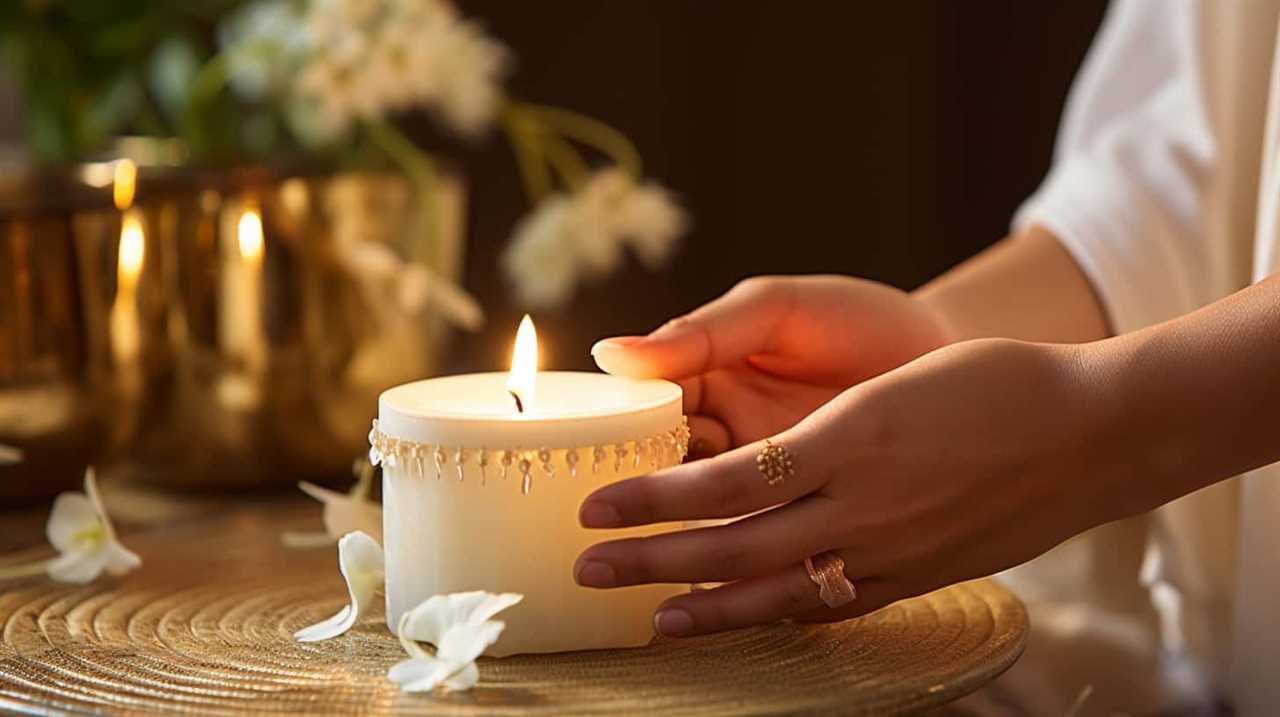
What Are the Advantages of Using Paper Wicks in Candles?
Using paper wicks in candles offers several advantages. They are easy to make at home and provide a sustainable alternative to traditional wicks. Paper wicks burn evenly and can be customized for different candle sizes.
How Do Wood Wicks Affect the Burning Time of a Candle Compared to Other Wick Materials?
Wood wicks, compared to other materials, can affect the burning time of a candle due to their unique properties. The burning efficiency of wood wicks may vary, and their environmental impact should be considered when choosing a wick material.
Conclusion
In conclusion, the wick of a candle is typically made of various materials such as cotton, linen, hemp, paper, wood, and even metal-core. Each type of wick has its own unique properties and characteristics that can affect the burning and performance of the candle.
From the humble cotton wick to the unconventional mica wick, the world of candle wicks offers a wide range of options for enthusiasts. So, dive into this fascinating realm and let your imagination burn with possibilities.












